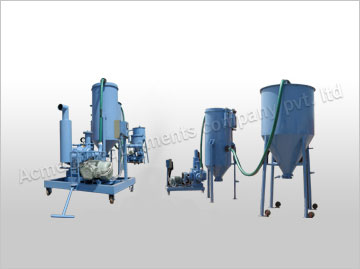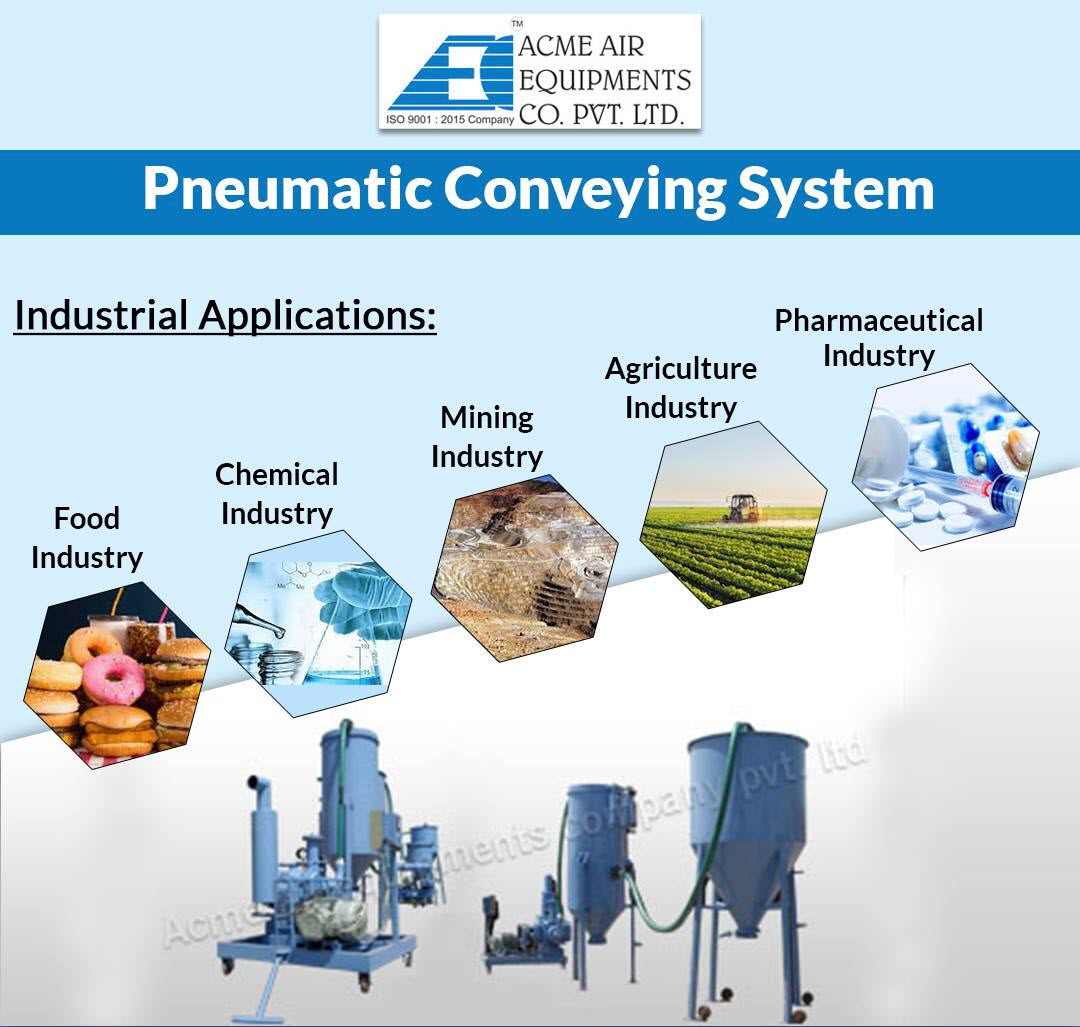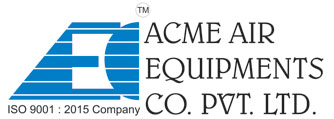Table of Contents
Pneumatic conveyor systems have become a cornerstone of industrial material handling solutions in Zambia. These systems offer a versatile and efficient way to transport bulk materials, liquids and powders over long distances with minimal human intervention. However, industries in Zambia face several challenges in adopting and utilizing pneumatic conveyors, from infrastructure limitations to environmental factors.
This article will explore how pneumatic conveying systems are overcoming these challenges across key cities in Zambia, including Lusaka, Ndola, Kitwe, Kabwe and Livingstone.
Pneumatic Conveyor Systems and Its Features
Before delving into the challenges and solutions, it’s essential to understand what pneumatic conveyor systems are and their widespread applications. Pneumatic conveyors use air pressure to move materials through pipelines, offering an efficient and cost-effective solution for various industries.
Key Features of Pneumatic Conveyors:
- Flexibility: Can convey a wide range of materials, including powders, grains and bulk solids.
- Compact Design: Pneumatic conveyor systems can fit into tight spaces, making them ideal for industries with limited room.
- Safety: Pneumatic systems can transport hazardous materials without exposing workers to risks.
These systems are particularly popular in industries such as food processing, pharmaceuticals, chemicals and mining. Pneumatic conveying is an essential part of Zambia’s growing industrial sector.

Key Cities in Zambia Face Challenges with Pneumatic Conveyor Systems
Zambia’s industrial landscape is shaped by its diverse cities, each contributing to the economy in unique ways. Let’s explore how pneumatic conveying systems are being adopted and the specific challenges they are helping to address in some of Zambia’s most prominent cities.
Pneumatic Conveying in Lusaka – Zambia’s Capital and Economic Hub
Lusaka, the capital city of Zambia, is at the forefront of adopting pneumatic conveyor systems. The city serves as the country’s industrial hub, with industries ranging from food processing to chemical manufacturing.
Challenges in Lusaka:
- Infrastructure Limitations: The lack of adequate infrastructure in certain industrial zones makes it difficult to install complex conveyor systems.
- Energy Constraints: Power outages are common, which can impact the efficiency of pneumatic conveying equipment that relies on consistent energy supply.
Solutions with Pneumatic Conveyor Systems:
- Adaptability: Pneumatic systems can be customized to fit various infrastructure setups. For example, a vacuum pneumatic conveying system can be installed in areas with limited space.
- Energy Efficiency: Modern pneumatic systems are designed to consume less energy, making them more viable in cities like Lusaka where power supply issues can hinder operations.
Pneumatic Conveyors in Ndola – A Key Mining and Manufacturing City
Ndola, located in the Copperbelt region, is known for its mining and manufacturing industries. The city plays a crucial role in Zambia’s economic growth, particularly in copper production.
Challenges in Ndola:
- Heavy Dust and Contamination: In industries such as mining, dust is a significant problem, both for workers’ health and equipment maintenance.
- Harsh Working Conditions: Mining operations require equipment that can withstand extreme conditions, including high dust and abrasive materials.
Solutions with Pneumatic Conveyor Systems:
- Dust Control: Pneumatic vacuum conveying systems are ideal for controlling dust and preventing contamination during the material transfer process. These systems are equipped with dust extraction features to ensure a cleaner environment.
- Durability: Pneumatic conveyors are designed to be robust and can be customized for harsh environments, making them well-suited for Ndola’s mining industry.
Pneumatic Transfer System in Kitwe – Industrial Powerhouse of the Copperbelt
Kitwe, another major city in the Copperbelt region, is a hub for mining and heavy manufacturing. Like Ndola, Kitwe faces similar industrial challenges, especially when dealing with bulk materials and powders.
Challenges in Kitwe:
- Material Handling Difficulties: The transportation of heavy materials in bulk, such as ores and coal, can be labor-intensive and inefficient.
- Limited Automation: Many industries in Kitwe still rely on manual labor for material handling, which is time-consuming and prone to errors.
Solutions with Pneumatic Conveying Systems:
- Increased Automation: Pneumatic conveyor systems help automate material handling, reducing labor costs and increasing throughput.
- Efficient Transport: These systems provide a fast and efficient means of transporting materials over long distances, significantly improving productivity.
Lean Phase Pneumatic Conveying Kabwe – Agriculture and Mining Industry Synergy
Kabwe, a city known for both its agricultural and mining industries, faces unique challenges related to the transportation of bulk agricultural products, such as grains and fertilizers.

Challenges in Kabwe:
- Agricultural Product Transport: The transportation of bulk agricultural products can be challenging due to the large volume of materials and the need for gentle handling.
- Mining Byproducts: Kabwe also deals with the transportation of mining byproducts, which can be abrasive and corrosive.
Solutions with Pneumatic Conveyor Systems:
- Gentle Material Handling: Pneumatic conveying systems can transport delicate agricultural products without damaging them, ensuring quality preservation.
- Corrosion-Resistant Systems: Manufacturers of pneumatic conveyors can design systems with corrosion-resistant components, ideal for transporting mining byproducts.
Pneumatic Conveyor System in Livingstone – Tourism and Industrial Integration
Livingstone, located near the Victoria Falls, is a city that blends tourism with industrial activities. While tourism is the main economic driver, industries such as food processing and cement manufacturing are becoming increasingly important.
Challenges in Livingstone:
- Space Constraints in Tourist Areas: The city’s infrastructure, particularly in tourist-heavy areas, limits the space available for installing traditional conveyor systems.
- Seasonal Production Fluctuations: Industries like food processing face seasonal fluctuations in production, requiring flexible and adaptable systems.
Solutions with Pneumatic Conveyor Systems:
- Compact and Flexible Design: Pneumatic conveyor systems can be installed in compact spaces, making them ideal for cities like Livingstone where space is limited.
- Scalability: Pneumatic systems can be easily scaled up or down depending on production needs, allowing industries to adapt to seasonal changes in demand.
Advantages of Pneumatic Conveying Systems in Overcoming Challenges
Pneumatic conveyor systems offer numerous advantages that help businesses in Zambia overcome operational challenges. Some of these benefits include:
Pneumatic Conveyor System Reduces Labor Costs
Pneumatic conveyors reduce the need for manual labor in material handling, minimizing human error and operational inefficiencies. This is particularly beneficial in industries in Zambia where labor costs can be high and skills shortages may exist.
Pneumatic Transport System Improves Material Flow
By using air pressure to move materials, pneumatic conveying systems allow for smoother, more consistent material flow. This ensures that operations run efficiently, even in challenging environments like those found in Ndola’s mining sector or Kitwe’s manufacturing industries.
Pneumatic Conveying System Offers Minimal Maintenance
Pneumatic conveying systems require minimal maintenance, making them ideal for industries in Zambia that may face challenges with maintaining complex mechanical systems. With fewer moving parts, these systems are less prone to breakdowns, reducing downtime and improving productivity.
Future of Pneumatic Conveyor Systems in Zambia
The adoption of pneumatic conveying systems in Zambia is expected to grow in the coming years as more industries look for efficient, cost-effective solutions to transport materials. The flexibility, automation capabilities and safety features of pneumatic conveyors make them an attractive option for industries in Zambia’s key cities, including Lusaka, Ndola, Kitwe, Kabwe and Livingstone.
With advancements in pneumatic system technology, these systems are becoming more energy-efficient, compact and adaptable, addressing a wide range of challenges faced by industrial operators in Zambia.
FAQs About Pneumatic Conveyor Systems
1. What industries benefit the most from pneumatic conveyor systems in Zambia?
Industries such as mining, food processing, agriculture and manufacturing are the primary sectors benefiting from pneumatic conveyor systems in Zambia.
2. How do pneumatic conveyors reduce labor costs?
Pneumatic conveyors automate the material handling process, reducing the need for manual labor, thus cutting down on labor costs and improving operational efficiency.
3. What challenges do industries in Zambia face when implementing pneumatic conveyor systems?
Challenges include infrastructure limitations, energy constraints, dust control and the need for systems that can withstand harsh working conditions.
4. How do pneumatic conveyor systems improve safety in industrial environments?
By minimizing the need for manual handling of hazardous materials, pneumatic conveyors reduce the risk of accidents and injuries, enhancing workplace safety.
5. Are pneumatic conveying systems adaptable to Zambia’s industrial conditions?
Yes, pneumatic conveyors can be customized to suit Zambia’s unique industrial conditions, including harsh environments, space constraints and seasonal production fluctuations.
Conclusion
Pneumatic conveyor systems are transforming Zambia’s industrial sector, offering solutions to many challenges faced by key cities like Lusaka, Ndola, Kitwe, Kabwe and Livingstone. From enhancing material handling efficiency to improving safety and reducing labor costs, pneumatic conveying systems provide numerous benefits that help businesses stay competitive in a rapidly evolving industrial landscape.
About Author

CEO
Mr. Vishwesh Pardeshi is the CEO of Acme Air Equipments Company Pvt. Ltd., an industrial and engineering goods manufacturing company based in Ahmedabad, Gujarat (India). He has taken over the responsibility from founding Partners and Directors of the Company, and is now leading a talented group of professionals since 2020 by bringing in vast industrial and management expertise. By qualification, he holds a Bachelor Degree in Mechanical Engineering and also holds a MBA degree from reputed institutes. Under his leadership, the Company has successfully executed prestigious projects by delivering high quality and world class products from a state of the art manufacturing facility which combines CNC-enabled precision manufacturing and strong after sales support. In line with the Vision, Mission and Core Values of the Organization, Mr. Vishwesh Pardeshi continues to drive Quality, Reliability and Global Expansion at Acme Air Equipments Co. Pvt. Ltd.









